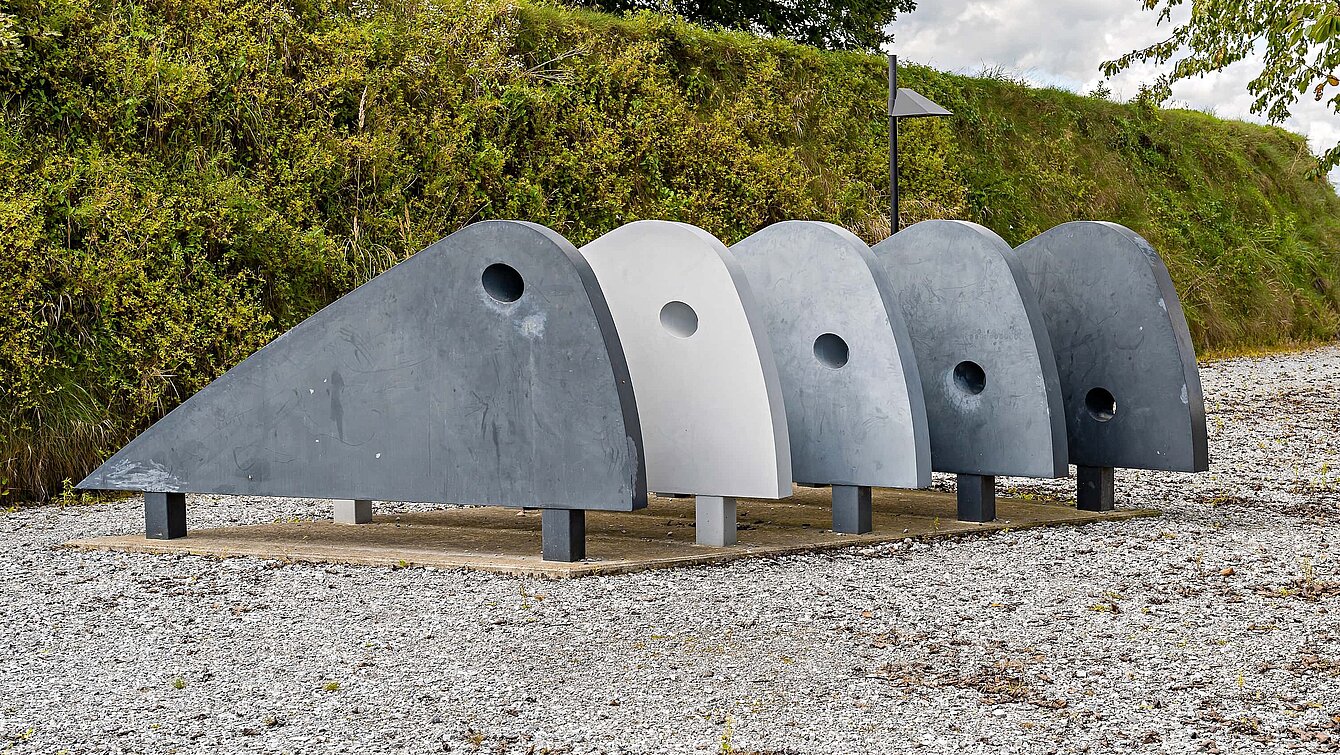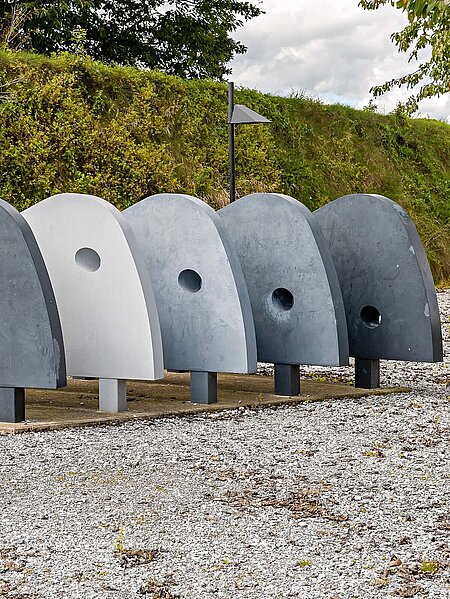This sculpture is fixed and rigid, and yet feels as if it were in a state of motion—the hole shifts from the top edge of the first curve to the bottom of the fifth and last curve, suggesting an imaginary movement. The title could also be a reference to this, since to perambulate means to walk round, through or about something. A rotation is depicted that makes the object, which resembles a machine, look as if it were rolling forward. The transfer of movement that is projected from one ‘machine part’ to the next also helps to generate this perception of a rolling motion.
Perambulator
Karin Hazelwander, 1993


Image Credits
Author
Elisabeth von Samsonow
Location on map
Position 27
Owner
Artothek des Bundes
Artist biography
Karin Hazelwander
Show all
About the sculpture
Karin Hazelwander’s “Perambulator“ appears to be an assembly with a function. It is obviously designed as a perambulating machine, one that “walks through, over, about” (Latin: perambulare).
More recent sculptural works by Hazelwander show that she is also interested in the Simulator, an apparatus that receives aesthetic projections. The seriality of the parts and their dynamic curve shape are reminiscent of industrial construction methods where force is exerted over rotating slabs.
Another association conjured up by the work is that of the agricultural appliances that are pulled across fields by tractors and that, depending on the soil, measure several shares or blades. The “Perambulator” would thus be a five-blade machine. This association with agricultural machinery, which, like military appliances, is often the result of a highly specialised technological development, creates a reference to the soil, which is also of essential importance in a sculpture park.
Agricultural machines frequently have proud Latin names that make it quite difficult to distinguish them from the artistic Readymade. One of the most common terms for such machines, for instance, is “cultivator”.
In Hazelwander’s sculpture, the mark indicating an imaginary movement shifts from the upper edge of the first curve down to the lower edge of the fifth and last one in the form of a hole in the corpus. In a diagrammatic form, the sculpture constitutes a rotation that, if the object were to execute it, would roll it forward.
The projected transfer of motion from one “machinery part” to the next is also mentioned by Aristotle in a surprisingly technoid context in his small natural philosophical treatise “On the motion of animals” as a condition for being able to walk: perambulating as an act that depends on many assumptions.



















